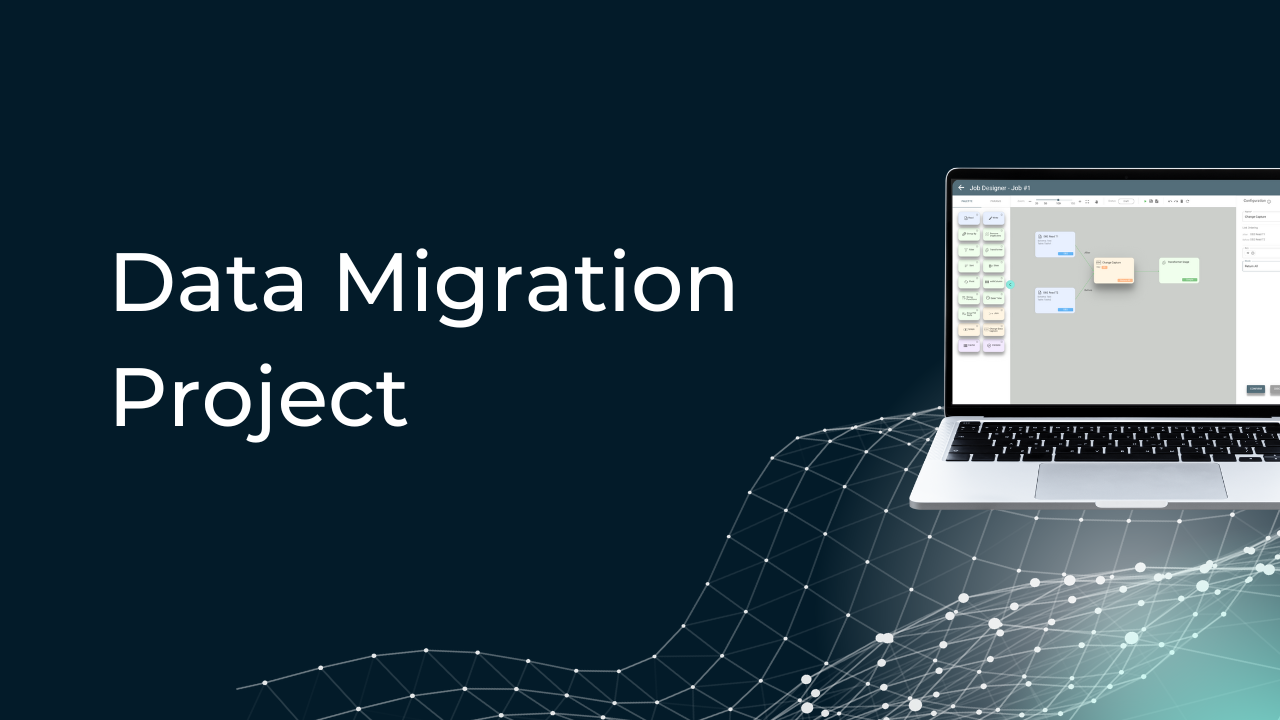Table of Content:
Table of Content:


The modern world is becoming more data-driven, and data warehouse migration is one of the hottest topics in enterprise data management. The explosive growth of digital technology has completely changed the data warehouse landscape. And companies are now moving to the cloud environment to modernize their experience.
Migrating to the cloud is not a matter of whether, but rather when. New data sources, limitations of legacy platforms, financial issues, and other reasons force businesses to move to the cloud. The data warehouse migration process should be well-established and smooth, regardless of the reasons and the chosen strategy.
In this article, you will find everything you need to know about transferring your data architecture to the cloud and migrating your data warehouse. Keep reading to learn the successful implementation cases and the world’s best practices in data warehouse migration.
What is Data Warehouse Migration?
In general, data migration is the process of moving data from one system to another. Data warehouse migration is the transfer of data from old storage to a new one. It includes the following processes:
- migrating an existing data warehouse from one platform to another;
- upgrading or updating an existing repository with new and improved data, structure, hardware, or software;
- designing a completely new data warehouse from various disparate source systems.
Today’s businesses are moving to the cloud environment and migrating their data architectures to the cloud. So, they can take full advantage of the unique benefits offered by advanced cloud warehouses, such as improved flexibility, increased scalability, and enhanced security.
Compared to outdated on-premises warehouses, cloud ones are much cheaper — they are cost-effective, have pay-as-you-go features, and there is no need to buy hardware. Cloud warehouses are also significantly more scalable and flexible, as well as show better performance (quick use of ETL for integration and data processing). These features and differences dictate the reasons and relevance of data warehouse migration.
Cases of Data Warehouse Migration
Let’s explore successful migration and development cases using the best practices of IBA Group as an example. We will look at what challenges the team faced, what they did during the migration process, and what the result was. IBA has broad expertise based on the most effective practices of data warehouse migration and extensive experience in dealing with such projects.
Building a Global Enterprise Data Warehouse and Providing 24/7 Support
The developers had to create and support the Enterprise Data Warehouse, ETL processes, and web applications for data processing. IBA Group designed a financial planning and forecasting system for client projects to fulfill this business challenge. As a result, they developed a system that generates reports for the company’s management to determine financial forecasts for the next quarter.
Developing a Cognitive Platform for Enterprise Data Management
The challenge for the developers was to design a reliable, secure, and flexible cognitive platform for data collection and analytics that modifies core business processes. The IBA Group team worked on the Cognitive Enterprise Data Platform, which makes it easy to get, share, and integrate enterprise data. As a result of the successful implementation of the project, CEDP has more than 100 business data assets and significant data analytics capabilities.
5 Data Warehouse Migration Best Practices
You can migrate data and move it to the cloud in different ways. And to choose the approach and strategy that will be the most optimal for your project and best suit your goals, first of all, you must have a full understanding of the current state of your data warehouse.
Let’s consider the best practices for data warehouse migration.
Lift and Shift
This approach to data warehouse migration provides for the transfer of data to the cloud without redesigning or restructuring processes. It is the best option and the most optimal solution for companies that have no doubt that their data warehouse architecture functions properly and without any problems. The transition to the cloud should be dictated only by the desire to gain more advantages and additional profits, such as increased security, compliance, emergency recovery, and others.
This practice is also known as rehosting. The “Lift and Shift” strategy reduces the spending for users to purchase and maintain storage hardware and, just as importantly, makes data storage more affordable. This option is cost-effective and fast to implement.
The “Lift and Shift” approach covers the following practices:
- Identifying the current landscape and analyzing data usage.
- Migrating only what is needed.
- Identifying and eliminating data type inconsistencies.
- Implementing a robust data quality assurance system.
Simplify and Migrate
This strategy for migrating a data warehouse to the cloud is about keeping the architecture as simple as possible before migrating. The “Simplify and Migrate” option is also called refactoring. It stands for the transformation of the warehouse’s architecture, and the goal is to make sure that it is ideal for the cloud. This kind of approach allows you to take the most and experience all the benefits of the cloud environment. Preparing a data warehouse for the cloud may involve increasing flexibility, enhancing scalability, and some other improvements.
Completely Redesign and Migrate
This data warehouse migration option is used if the analysis and evaluation of the existing warehouse architecture show that it is completely unsuitable for the cloud. In this case, the company is forced to develop an absolutely new data warehouse from scratch so that it is usable in the cloud environment. However, you can always take into account the existing on-prem data warehouse. This will allow you to understand in the future how you can cope with different challenges and solve any occurring situation in the best way when using the new data warehouse.
This practice is one of the best methods of data warehouse migration and is also known as a complete transformational approach. The bottom line is that what was valuable and vital to business a few years ago may no longer be so today. Therefore, companies should be open to developing an entirely new cloud data warehouse. The most important thing is to be progressive and flexible, as well as to create a future-proof architecture.
“Big Bang” Migration
This best practice of data warehouse migration provides that the entire transfer is carried out within a specific and limited time frame. Live systems are subject to downtime while data is being processed through the Extract, Transform, and Load processes and moved to a new database.
The key feature and main advantage of the “Big Bang” approach is that everything is done quickly, within a limited period of time. However, the pressure can be overwhelming as the business works with one of its resources offline. While such a quick migration may be the best strategy for your project, consider maintaining the old version, so your employees will have time to get used to a new database.
“Trickle” Migration
This data warehouse migration approach is mainly different. The migration process is carried out in stages and gradually. During implementation, the old and new systems function simultaneously, which helps to avoid downtime, failures, and pauses in operation. Real-time processes are able to provide fully continuous data migration.
One of the limitations and difficulties in applying the “Trickle” approach is the complex implementation in terms of design. However, when properly used and implemented, it will not increase potential risks, but rather minimize them.
Regardless of which method you choose, there are some universal and win-win practices of data warehouse migration to keep in mind.
- Back up your data before implementation. You risk losing data if an error or failure occurs during the migration process. Therefore, it is critical to make sure that you have backup resources available and tested.
- Stick to your chosen strategy. Once you have an approved plan, don’t give it up or back down from it. Whether everything is going smoothly or you are running into some problems, the best thing you can do is to be ready for difficulties and always keep the plan in mind.
- Perform testing at all stages. Test the data migration processes on every step — when planning, designing, implementing, and maintaining. This will allow you to be sure that you will get the desired result in the end.
How Can We Help?
Qualitative and effective data warehouse migration is a challenge for any company. And in order to complete it successfully and get the desired results, you must conduct a thorough analysis, minimize possible risks, carefully plan all processes, and, most importantly, choose a reliable technical partner.
We at Visual Flow provide a full range of data migration services for businesses and help not only design new cloud data stores but also successfully migrate data warehouses to the cloud environment. Our advanced and experienced data warehouse migration experts have all the skills and expertise to get the most out of your cloud transition.
Our team has successfully implemented numerous data warehouse migration projects for different businesses, using various approaches, strategies, and practices. One way or another, we have already dealt with a case similar to yours.
Get the best cost-effective cloud solutions. Our proven schemas and rich experience will help you achieve a faster return on investment and get a fully tailored solution to your business needs.
Visual Flow provides high-quality services for planning, implementing, managing, and extending migration projects. You can focus on your business-critical tasks while we turn your warehouse into a true cloud data platform.
See how our data warehouse migration services work for you.
Conclusion
Businesses now realize that no matter how many resources they put in, analysts simply cannot use unreliable, outdated, or hard-to-reach data. And the exponential growth of data creates a great demand for business intelligence and advanced warehousing. For a warehouse migration to be successful, data must be reliable, delivered quickly, and accurately meet the needs of end-users.
Data warehouse migration is a complex, large, and critical project, and the main thing here is to remember the considerations that you must optimize your processes, minimize risks, reduce complexity, and increase reliability. Take advantage of Visual Flow’s cutting-edge services, which are based on data warehouse migration best practices and the most successful global cases. Experience the full benefits of the cloud environment.
FAQ
There are many types of data migration tools that can be useful and valuable. Consider data integration tools (for designing or redesigning ETL processes); data warehouse automation tools (for deconstructing outdated ETLs, reverse building and rebuilding ETL, and regenerating ETL processes); data virtualization tools (for providing a virtual layer of data representations); system integrators and service providers (for manual data mapping extraction). These tools will automate data warehouse migration and make it faster, smoother, and more reliable.
Cloud migration is the process of transferring some or all of the business data center capabilities to the cloud to operate within the cloud infrastructure. It involves moving data, applications, and IT processes from on-premises legacy infrastructure to the cloud computing environment.
The cloud migration process covers several steps — planning, setting measurement goals, creating a cloud cybersecurity strategy, copying data, moving business intelligence, and switching production from on-premises to the cloud. There is also further maintenance to ensure optimization, security, and ease of retrieval.
The best migration practices of a data warehouse include mandatory data backup, strict adherence to the plan and the chosen strategy, constant testing at all stages, and more. Among the best methods of data warehouse migration are the “Lift and Shift” approach, the “Simplify and Migrate” strategy, the “Completely Redesign and Migrate” option, the “Big Bang” Migration, and the “Trickle” Migration.
Contact us































































